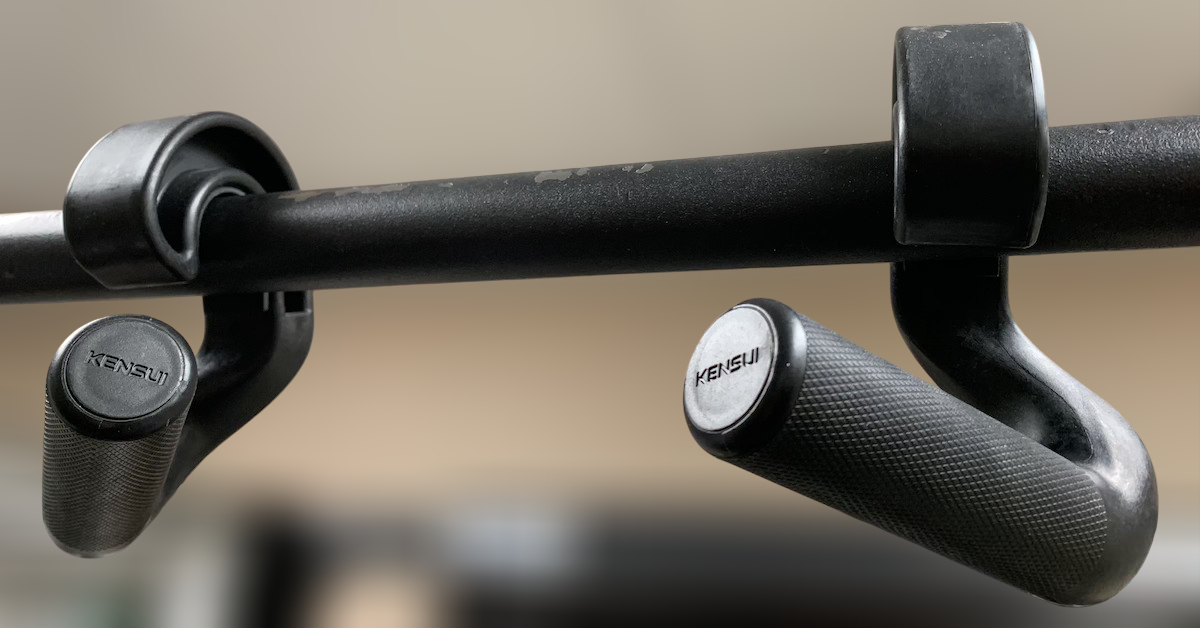Many strength athletes are creatures of habit. They do the same thing day in and day out. They get big, they get strong, and sometimes they get bored! A great way to cure boredom is to set a challenge. Forget about adding more weight to the bar. Do something different. In fact, forget the bar altogether. Set a challenge that involves strictly your body weight—something for your upper body, lower body, and core. Here are four muscular endurance goals that any bodybuilder or powerlifter should be able to achieve:
20 Chin-Ups
Ask any 250+ pound bodybuilder or powerlifter to perform as many chin-ups as possible—and I’m talking about strict, controlled, “dead-hang to chin-clearing” chin-ups—and you’ll likely count the reps on one hand, maybe two if they’re lucky. Most gym-goers who weigh considerably less will manage 10 to 12 clean reps.
The main factors that determine chin-up success are body weight, body composition, and strength, but the one that trumps them all is the power of the mind. If you believe you can’t perform 20 chin-ups, then you won’t! It’s a self-fulfilling prophecy. The mind plays a huge role—you must believe you can do it first in order to succeed.
Many people limit themselves before they even begin. If you constantly max out at 12 reps, your brain expects you to fatigue at that point. It’s tough to push past it, but there is a way. You need to trick your brain.
Here’s a tip I learned from Karsten Jensen, a former strength and conditioning coach for the Danish National Elite Sports Institution: Start counting reps at 10 instead of 1. By the time you hit 20, you’ve only performed a manageable 10 reps. Next workout, start at 9, the following workout at 8, and so on. Altering the count and creating the experience of achieving 20 reps will help break the plateau.
For more tips, check out How to Achieve 20 Chin-Ups.
100 Push-Ups
Remember back in high school when you could knock out 100 push-ups like it was nothing? I recall doing over 100 push-ups in a minute back then. Fast forward a few years, and all of a sudden, they’re not so easy!
Here are four methods to help you hit 100 non-stop push-ups if you can currently only manage 40 or 50:
- Start with 4 sets of 25 reps, resting 3 minutes between sets. Decrease the rest by 10–15 seconds each session.
- Perform as many sets as it takes to reach 100 total reps, recording your time. Each session, aim to complete the task in less time or with fewer sets.
- Use a ladder technique: Perform 1 rep, rest as long as it took to complete the rep, then do 2 reps and rest for that time, and so on. Continue until you can no longer complete the desired reps. Then either start over from the bottom or “climb down the ladder” to the beginning.
- Modify the movement to achieve 100 consecutive reps. Use knee push-ups or push-aways to build endurance, then progressively increase difficulty by raising knee height, lowering hand height, or adding a weighted vest.
10 Pistols
Any competitive powerlifter should be able to squat double their body weight—that’s a given. So it stands to reason that they should be able to squat their body weight on one leg, right?
Well, get them to try it.
The movement, known as a “pistol squat,” is tougher than it looks, especially for big guys. When done in a controlled, butt-to-heel manner, it requires not just strength but also balance, coordination, and flexibility.
Any strength athlete should be able to perform 10 reps per leg using only body weight. Once that becomes easy, add a weighted vest.
First, determine your limiting factor:
- Flexibility? Do some stretching and get bodywork done.
- Balance? Use support at first (hold onto a power cage), then wean yourself off one finger at a time.
- Strength? Build it up with unilateral movements like step-ups, split squats, and Bulgarian split squats.
A great resource for pistol training is The Naked Warrior by Pavel Tsatsouline. You’ll go from zero to hero in no time!
2-Minute Static Back Extension
Your core is strong—you hoist hundreds of pounds—but your back always hurts. Maybe it’s not more strength that you need… maybe you need endurance!
Research by Dr. Stuart McGill, a spinal biomechanist and author of Ultimate Back Fitness and Performance, has shown that endurance is more important than strength for low back health. A great way to test this in the gym is with a static back extension (also known as an extensor endurance test or Biering-Sorensen test).
The goal: Perform a standard back extension and hold the top position for two minutes. Anything less, and you fail the test. If you don’t succeed initially, keep trying! Add the movement to the end of every workout and aim to beat your previous time, even if only by a few seconds. You’ll reach that two-minute mark in no time.
Strength athletes should have some endurance. We’re not talking about running marathons, but being able to do 20 chin-ups, 100 push-ups, 10 pistols, and a 2-minute static back extension is not unreasonable. Accomplish these four goals by the end of the year, and expect a leaner body, added muscle mass, and improved low back health for your efforts. The challenge has been set!

Upgrade Your Pull-Ups with Swissies-SP Handles
Pull-ups are one of the best exercises for building back and arm strength—but not all pull-up bars are created equal.

No Time to Walk After a Meal? Do This Instead!
By now, most people know that getting in daily steps is essential for overall health. In particular, taking a short

Stay Fit on the Fly: No-Excuse Workouts for Travelers
One of the biggest challenges people face when traveling is maintaining their exercise routine. The two most common excuses? Lack
follow
Error: No feed with the ID 2 found.
Please go to the Instagram Feed settings page to create a feed.
